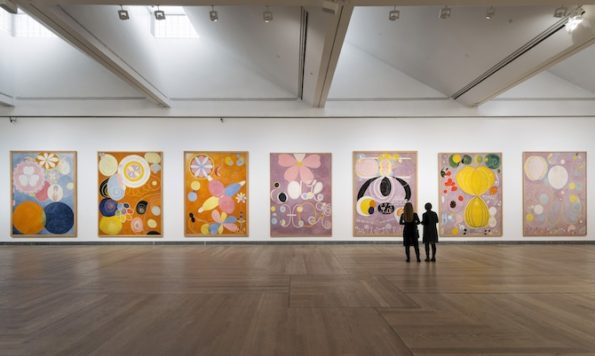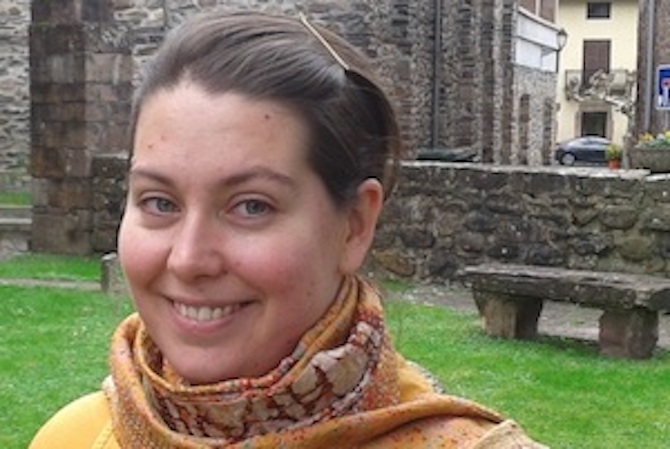Search
To search for an exact match, type the word or phrase you want in quotation marks.
A*DESK has been offering since 2002 contents about criticism and contemporary art. A*DESK has become consolidated thanks to all those who have believed in the project, all those who have followed us, debating, participating and collaborating. Many people have collaborated with A*DESK, and continue to do so. Their efforts, knowledge and belief in the project are what make it grow internationally. At A*DESK we have also generated work for over one hundred professionals in culture, from small collaborations with reviews and classes, to more prolonged and intense collaborations.
At A*DESK we believe in the need for free and universal access to culture and knowledge. We want to carry on being independent, remaining open to more ideas and opinions. If you believe in A*DESK, we need your backing to be able to continue. You can now participate in the project by supporting it. You can choose how much you want to contribute to the project.
You can decide how much you want to bring to the project.

This year there are lots of exhibitions in the big museums dedicated to women artists of the avant-garde and modernism, in a clear attempt to revisit the history of art and its construction: Saloua Raouda Choucair and Mira Schendel at the Tate Modern, María Blanchard at the MNCARS, Hilma af Klint at the Moderna Museet or Eileen Gray at the Centro Pompidou. What discourses are being articulated in the presentation of these works? What is the role does the format of the exhibition play in these presentations? Let’s analyse some examples.
Hilma af Klint is the exhibition of the year at the Moderna Museet, which has made a strong commitment to introducing a pioneer to the rank and file of the avant-garde: woman, medium and Swede. Born in 1862, with a Fine Art training, Hilma af Klint painted naturalistic landscapes as a profession and created multiples and enormous abstract paintings and drawings as a vocation. As if that wasn’t enough, she hid them from the world until 1964 because she didn’t think the world was ready for them. Like her contemporaries, Kandinsky and Malevich, she was interested in what you couldn’t see: in the spiritual. She was drawn to anthroposophy, to scientific discoveries such as X-rays and, like many others of her time, the world of spirits. In 1892 along with four other women she formed a group known as “The Five”, which carried out spiritualist sessions. Together they produced 20,000 pages of automatic writing and a huge number of drawings representing the ideas of the spirits to explain the universe. We are talking about the year 1900.
Following their instructions, Hilma af Klint between 1906 and 1915 made her ‘Paintings of Time’ – several series of paintings representing universal laws and the evolution of the world. They were large format works in which the yellow (male) and blue (female) interweave to create life forms which, through the use of symbols, geometric shapes, plant abstractions and letters, offer dynamic compositions from the effervescence of life to the statics of death. Aesthetically it is beautiful exhibition, with large pieces that chronologically establish her as the first female abstract painter.
However, much of the information above is not available in the exhibition, such as the symbolism of the colours, for example, or the fact that “The Five” met for ten years before Hilda began “The Temple” and they continued to do so every week until it was finished. The works are presented à la white cube: abstracted from the world, full of signs that we fail to understand, alone in the grandeur of the artist’s language.
But Hilma was not alone. For one thing, her relation with “The Five” is fundamental yet their names do not even appear in the exhibition. Her session, texts and drawings are confined to a miserable little room with no transcriptions. Af Klint never denied any collaboration in the process of contact, in the creation of the texts and the drawings. Yet, the history of art and the exhibition have failed once again to recognise the need to exhibit collaborative works of multiple authorship, which surpass the limits of genius. The large paintings are by af Klint herself, but the importance of the automatic drawings as predecessors to them cannot be overlooked.
On the other hand, emphasising the competition to see who’s the number one in avant-garde art only goes to ignore the fact that Hilma af Klint shared with her “rival pioneers” a common sentiment, a broader concern than that which occupies a single individual touched by the muse. Af Klint did not make it by competing with, so much as amidst a group of people working on similar concepts. Not just that, as practicing as a medium must have meant, at that time, the chance for many women to have a voice. It is no coincidence that many of the suffragettes were also mediums. The political weight of a group of five women talking to the spirits, representing the world from their voices and feeling that they had to hide the result is completely diluted in the exhibition.
All this happens because of the resistance of the great museums to reject the fictitious hero of the avant-garde and their insistence on including women without considering why they were omitted at the time; what are the values that the construction of “art” has promoted that have excluded so much practice. It is along the lines of the previous exhibition at the museum, “Picasso versus Duchamp”, which, as if in a football match sets the artists-geniuses against each other to score goals. It is as if there was never any collaboration, rapport, discussion, relations with the world, with politics, with music and film, with daily objects or with life in general.
The exhibition of Hilma af Klint is beautiful, full of magnificent works, yet it is a lost opportunity; an opportunity to rethink what we really value in the histories of art. Is it the relations and collaboration, the artists (male and female) in their society, or is it a battle for fame (without asking ourselves how and on what basis that fame is built). With Hilma af Klint, the Moderna Museet has placed a joker in the pack without considering the possibility of playing something other than poker.

For Haizea Barcenilla art doesn´t seem to exist on its own, but as being interlinked with various social systems, embedded between ideologies and forms of looking, included in exchange networks of, buying and selling, production and exhibition. When she writes criticism, she likes to extend her object of study as much as possible, understanding it through being part of it, considering what her position is. For her, it is impossible to see art without everything else, and everything else without art. And sometimes she manages to interweave the two sides.
"A desk is a dangerous place from which to watch the world" (John Le Carré)